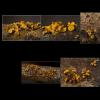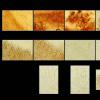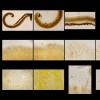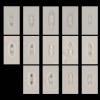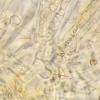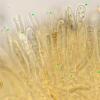
13-01-2026 09:10
 Danny Newman
Danny Newman
Dasyscyphella chrysotexta on indet. decorticate ha

13-01-2026 08:49
 Danny Newman
Danny Newman
Coccomyces sp. on fallen Rhododendron leavesPretty

13-01-2026 08:43
 Danny Newman
Danny Newman
Tricladium varicosporioides on indet. decorticate

12-01-2026 22:02
Ethan CrensonHello all, I am hoping someone will have some ins

13-01-2026 07:57
 Danny Newman
Danny Newman
cf. Bombardia on indet. decorticate woodAppalachia

13-01-2026 07:51
 Danny Newman
Danny Newman
Atrocalyx sp. on indet. herbaceous stemAppalachian

13-01-2026 07:28
 Danny Newman
Danny Newman
Chlorociboria glauca on indet. decorticate logThe

13-01-2026 07:14
 Danny Newman
Danny Newman
Neodasyscypha cerina on indet decorticate logThe S

11-01-2026 20:35
Hello.A very tiny pyrenomycete sprouting sparsely

12-01-2026 05:24
 Danny Newman
Danny Newman
Cyathicula coronata on Urtica dioicaCataloochee Di

Loc: Plantation Trail, Jean Lafitte National Historical Park and Preserve, Louisiana, USA
Coll: D. Newman, R. Cronce & K. Thorstad
Substrate: on dead, downed, corticate, firm/undecomposed, hardwood stick
all mounts made in KOH. excipulum composed of irregularly inflated/swollen chains of cells (asexual propagules as in I. irregularis?); context composed of long, slender, even hyphae, possibly embedded in a gelatinous matrix; paraphyses filiform and short, only slightly exceeding asci; both hymenium and abhymenium appear to contain ionomidotic granules/contents; asci biseriate; spores bi-guttulate and (probably) aseptate.
Spores:
(5.1) 5.3 - 6.5 (6.8) × (2.1) 2.2 - 2.6 (2.7) µm
Q = (2) 2.2 - 2.9 (3) ; N = 20
Me = 5.9 × 2.4 µm ; Qe = 2.5
GIF of ionomidotic reaction available at https://inaturalist-open-data.s3.amazonaws.com/photos/347983283/original.gif




Two new things I've noticed in these recent mounts: 1: the paraphyses are multi-septate, and 2: many contain bright yellow, refractive contents. I had observed it rather vaguely in the hymenium before, but not inside the paraphyses.
Thank you for sharing these high-value images. I would like to sequence this specimen, it would help to clear the mysterious taxonomy in this group...
If you like to send a piece of specimen to our lab, please, use this address:
Kadri Pärtel
Chair of Mycology
Department of Botany
Institute of Ecology and Earth Sciences
University of Tartu
Oecologicum
J. Liivi St. 2
50409 Tartu
Estonia
kadri.partel@ut.ee
Phone +372 5226179
THANK YOU FOR COOPERATION!


https://inaturalist.org/observations?place_id=any&q=Ionomidotis%20cf.%20fulvotingens&search_on=tags&user_id=ikhom&iconic_taxa=Fungi
I kept the first two speciments.
I wonder about I. fulvotingens that grows on Pinus strobus. Has it been ever sequenced? I found a specimen in Feb 2020 and I kept it. (https://inaturalist.org/observations/38581250)
Thank you for sharing your found.
I checked my data: all specimens we have studied and sequenced are on hardwood. It would be intresting to add one from a conifer.
Best regards,
Kadri

(5.1) 5.3 - 6.5 (6.8) × (2.1) 2.2 - 2.6 (2.7) µm
Q = (2) 2.2 - 2.9 (3) ; N = 20
Me = 5.9 × 2.4 µm ; Qe = 2.5


